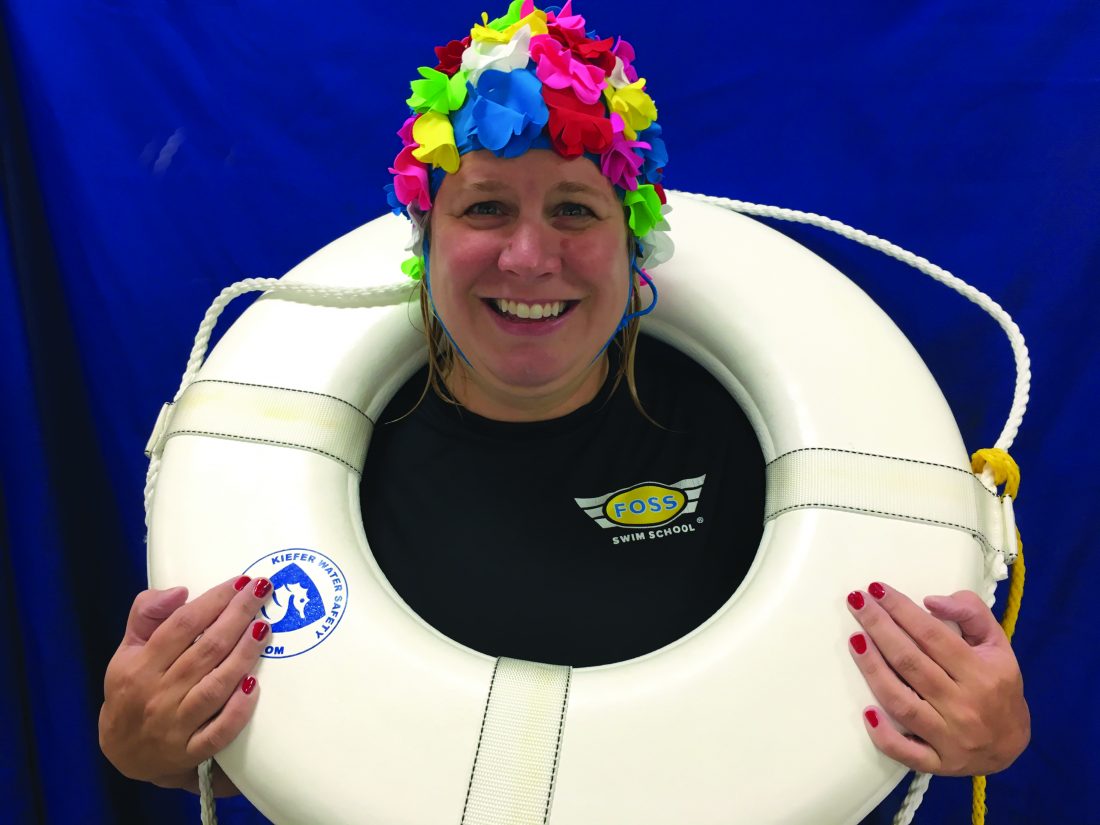The toddler years are full of rapid physical and emotional changes—and also a prime time for learning to swim. Starting swim classes early gives kids a boost in safety, has been shown to help kids reach developmental milestones sooner, and gives parents the confidence to enjoy a whole range of water-related activities with their kids.
Which sounds great, but what does it actually take to teach toddlers to swim?
“Toddlers are at the point where they want to be independent,” says Karen Butler, who teaches the Backfloat Baby®️ instructors for Foss Swim School. “Our classes have a range of ages in them, and we tailor the activities for each student within the class. For toddlers it means they do more things for themselves, instead of having their parent help them through the motions.”
The emotional development of toddlers is critical to consider as well. Toddlers often have strong opinions, short attention spans, and language and comprehension skills that can vary from day to day. Butler said that is part of why FOSS keeps toddler-ages children in the Backfloat Baby®️ levels, where parental involvement is closer and the way skills are taught is tailored to the child.
Creating swim lessons that fit how toddlers learn
“Some parents with toddlers think they’re in the wrong class when they see babies too,” says Butler. “We help them understand how we are able to help each child master the skills they need for the next classes, where they will learn swimming without parents in the pool.”
For toddlers to learn swimming, Butler says, lessons need to account for several things:
- Teaching parents to allow independence: As noted above, letting toddlers be independent is important. For this, parents need coaching too—to resist the urge to do things for their children, while still maintaining safety.
- Curiosity and experimentation: At the toddler age, kids like to try things many ways. Lessons can feed on that. Butler says one skill lets kids try jumping in the water to experience how deep they go, and then lets them feel how natural buoyancy works.
- Comprehension: Unlike babies, toddlers can take direction, but unlike older kids they can’t take in complex explanations. Butler gives parents a full explanation, and then has simplified instructions she gives directly to the toddlers.
- Attention span: As a rule, toddlers can’t take more than five continuous minutes on any one skill. The classes are designed to keep toddlers flowing from one skill to another quickly.
- Positivity: Keeping toddlers progressing while remaining safe is a balancing act. Because they want independence, they sometimes want to do things they aren’t ready for, so Butler will propose similar activities they can do. Finding ways to keep them safe without saying ‘no’ is important.
- Emotional maturity: Even when toddlers have the physical skills to swim at the next level, they often aren’t ready emotionally. Moving a child into a more advanced class without a parent often leads to separation anxiety, Butler says, and they also have a harder time sticking with safety rules when a parent isn’t present.
The joys of teaching toddlers
Toddler curiosity is an asset to teaching, Butler finds. At the higher levels of Backfloat Baby®️, toddlers are allowed to wear goggles and look in a mirror underwater. “They think that’s really cool, and so they often will keep their eyes in the water longer to look at themselves in the mirror,” Butler says.
There are rewards to teaching toddlers swimming as well, and parents and instructors should appreciate those while they can.
“Toddlers are more social, and they especially enjoy silliness,” Butler said. “It’s fun to interact with them. For example, when they give the instructor a high five, and we fall back into the water, they’re amazed, ‘Did I do that?’”
